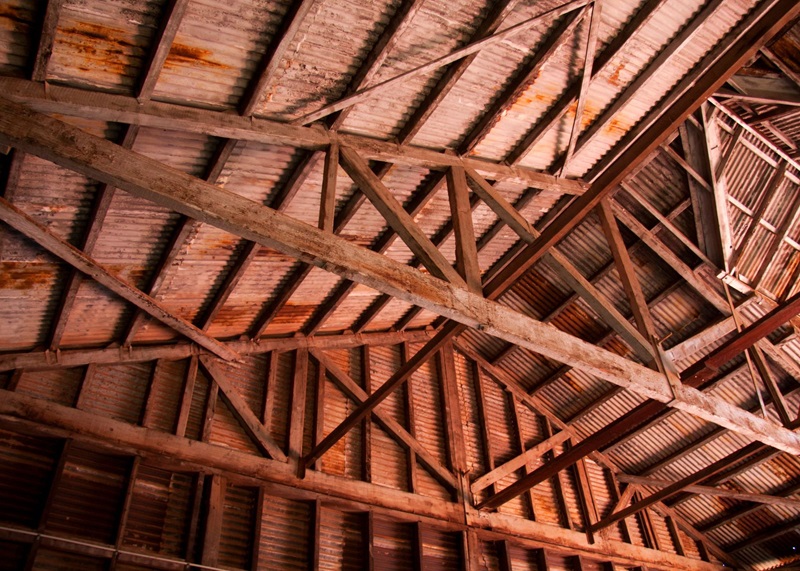Why this appeal court set aside a $328,000 roof collapse claim

Saskatchewan’s highest court has set aside a cost award of more than $328,000 related to the roof collapse of a hog barn in a case that examined the exception to a deterioration exclusion in a property insurance policy.
The initial Court of King’s Bench chambers decision in June 2023 allowed the cost award under a subscription policy, saying the partial roof collapse was due to concurrent wind and corrosion.
The Jun. 14, 2024 appeal court ruling said the chambers judge did not err in law regarding wind and corrosion, the latter of which also had an exclusion. But there were “several difficulties” with the judge’s conclusion that the deterioration exception allowed the full recovery of the $328,196.91 claim, Chief Justice Robert Leurer wrote in Economical Mutual Insurance Company v Brock Stock Farm Ltd.
Saskatchewan’s appeal court essentially ruled that while direct damage from deterioration isn’t covered, any damage resulting from that deterioration could still be covered. This means insurers might still be liable for damages under the exclusion.
What happened?
The incident that prompted the claim occurred in February 2016, when the roof of a barn building owned by Brock Stock Farm partially collapsed, causing damages it claimed under the policy.
Losses were caused by the gradual deterioration of part of the barn’s roof truss system. This type of loss or damage is excluded from coverage under the policy, although resultant damage is insured.
“In this case, the judge erred when she found that all of Brock’s losses constituted resultant damage, and she failed to make the necessary findings of fact that would allow this Court to determine what Brock is due under the policy, if anything,” Chief Justice Leurer writes. “Accordingly, this issue must be remitted to the Court of King’s Bench for determination…”
The barn’s roof had partially collapsed in December 2015, but the company repaired the damage without the insurers’ involvement. On Feb. 6 and 7, 2016, strong wind gusts of 87 km/h on the first day and 76 km/h on the second day were recorded at an Environment Canada weather station closest to the barn. On Feb. 10, an employee discovered a portion of the barn’s roof had collapsed at the farm in Brock, Sask.
Brock Stock Farm had a subscription all-risk policy with four insurers — Economical Mutual Insurance Company, Mutual Fire Insurance Company of British Columbia, Wawanesa Mutual Insurance Company and Peace Hills General Insurance Company.
The policy had many exclusions, including the deterioration exclusion, which said the policy does not insure loss or damage caused directly or indirectly…
4b. (15) By wear and tear, gradual deterioration, latent defect, inherent vice, or the cost of making good faulty or improper material, faulty or improper workmanship, faulty or improper design provided; however, to the extent otherwise insured and not otherwise excluded under this Form, resultant damage to the property is insured.
“The insurers raised this exclusion as the first basis upon which they resisted coverage under the policy,” Chief Justice Leurer writes. “The applicability of both the exclusion and the exception to it is at issue in this case.”
Corrosion or deterioration?
In the chambers decision, the judge did not directly conclude that corrosion fell within the scope of the deterioration exclusion, but she did equate the truss plates’ corrosion with their ongoing deterioration.
“Indeed, this was as much recognized by Brock when it wrote in its factum that ‘the corrosion of the truss plates, and the resultant deterioration and compromise to the structural integrity of the truss system, was effectively acknowledged by both of the structural engineers who testified in the application’ (emphasis added),” the appeal court decision says.
The insurers argued the cause of collapse was rusted and corroded truss plates and the gradual deterioration caused by the December 2015 and February 2016 collapses, relying on both the corrosion and deterioration exclusions.
“Brock argues that the deterioration exclusion operates only if deterioration is caused by wear and tear. However, this is not what the exclusion states,” writes Chief Justice Leurer. “The evident intent of the exclusion is to remove from the scope of coverage recovery for loss or damages caused directly or indirectly by any one of the listed causes, unless the claim is for resultant damage that is otherwise insured and not otherwise excluded by the operation of another exclusion clause…
“There is an extensive body of case law that discusses how to apply a resultant damages exception in the face of a loss that otherwise falls within the scope of the exclusion, whether that is because the loss or damages has been caused directly or indirectly by wear and tear, gradual deterioration, latent defect, inherent vice, or the cost of making good faulty or improper material, faulty or improper workmanship, or faulty or improper design.”
However, the appeal court says it could not determine which part, if any, of Brock’s loss the policy may insure.
“This is because the judge did not address this issue in any meaningful way,” Chief Justice Leurer writes. “Additionally, neither party provided helpful submissions to this Court on the point.
“Instead, the insurers simply asserted in their factum that ‘the damages awarded go beyond ‘resultant damage to the property insured.’ Brock essentially ignored the issue, by instead simply asserting that the deterioration exclusion did not operate.”
Effectively, the losses and damages claimed were caused directly or indirectly by gradual deterioration, the chief justice writes. “Brock therefore is limited to recovery of any resultant damage to the property insured. The issue of what amount of its loss, if any, falls within this exception to the deterioration exclusion must be remitted to the Court of King’s Bench for determination…
“As well, the insurers’ liability under the policy for resultant damages, if any, is yet to be determined on the evidence in this matter.”
Feature image by iStock.com/tommytucker7182







